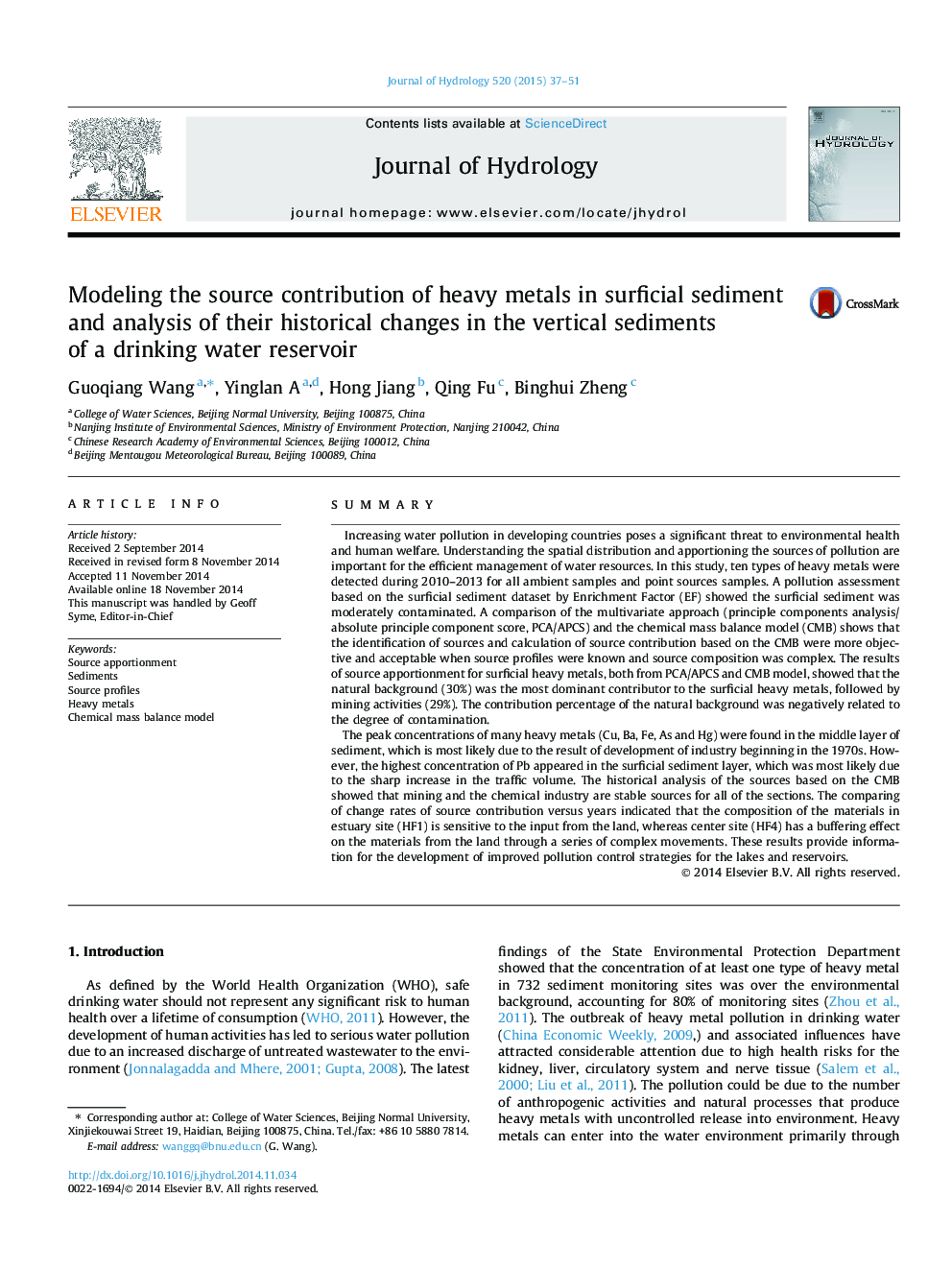| کد مقاله | کد نشریه | سال انتشار | مقاله انگلیسی | نسخه تمام متن |
|---|---|---|---|---|
| 6411815 | 1629930 | 2015 | 15 صفحه PDF | دانلود رایگان |
- The CMB model was more objective and suitable for source apportionment than was PCA/APCS.
- The spatial distribution pattern was determined by sources and water hydrodynamic conditions.
- The contribution of mining decreased over time due to improvements in management and technology.
SummaryIncreasing water pollution in developing countries poses a significant threat to environmental health and human welfare. Understanding the spatial distribution and apportioning the sources of pollution are important for the efficient management of water resources. In this study, ten types of heavy metals were detected during 2010-2013 for all ambient samples and point sources samples. A pollution assessment based on the surficial sediment dataset by Enrichment Factor (EF) showed the surficial sediment was moderately contaminated. A comparison of the multivariate approach (principle components analysis/absolute principle component score, PCA/APCS) and the chemical mass balance model (CMB) shows that the identification of sources and calculation of source contribution based on the CMB were more objective and acceptable when source profiles were known and source composition was complex. The results of source apportionment for surficial heavy metals, both from PCA/APCS and CMB model, showed that the natural background (30%) was the most dominant contributor to the surficial heavy metals, followed by mining activities (29%). The contribution percentage of the natural background was negatively related to the degree of contamination.The peak concentrations of many heavy metals (Cu, Ba, Fe, As and Hg) were found in the middle layer of sediment, which is most likely due to the result of development of industry beginning in the 1970s. However, the highest concentration of Pb appeared in the surficial sediment layer, which was most likely due to the sharp increase in the traffic volume. The historical analysis of the sources based on the CMB showed that mining and the chemical industry are stable sources for all of the sections. The comparing of change rates of source contribution versus years indicated that the composition of the materials in estuary site (HF1) is sensitive to the input from the land, whereas center site (HF4) has a buffering effect on the materials from the land through a series of complex movements. These results provide information for the development of improved pollution control strategies for the lakes and reservoirs.
Journal: Journal of Hydrology - Volume 520, January 2015, Pages 37-51
